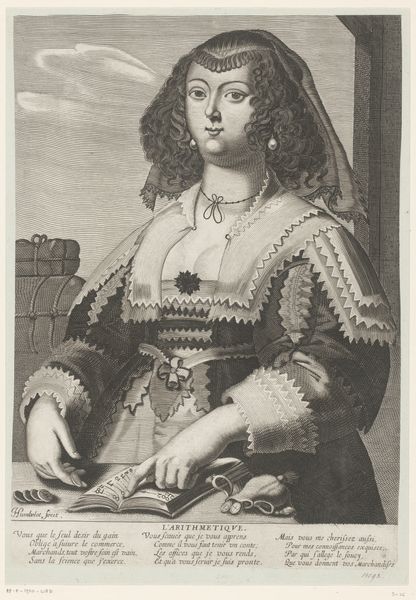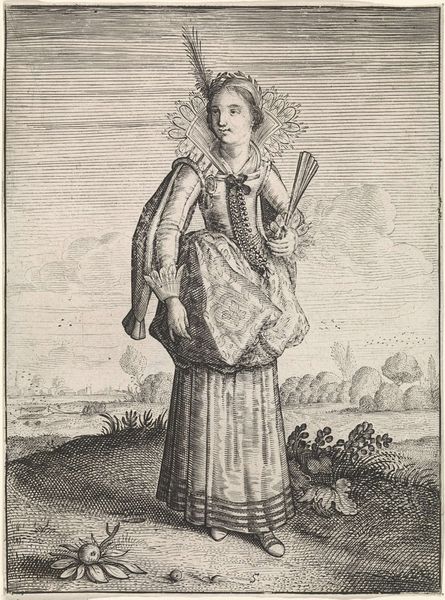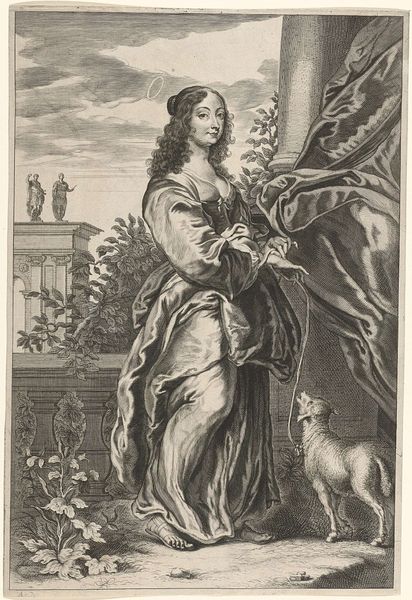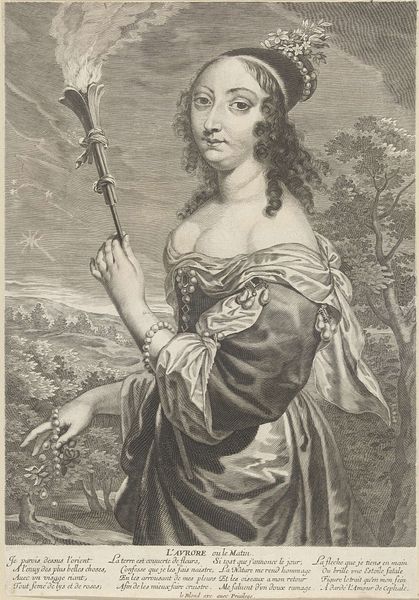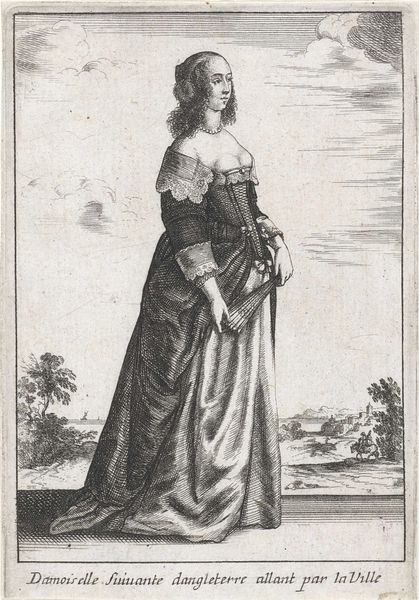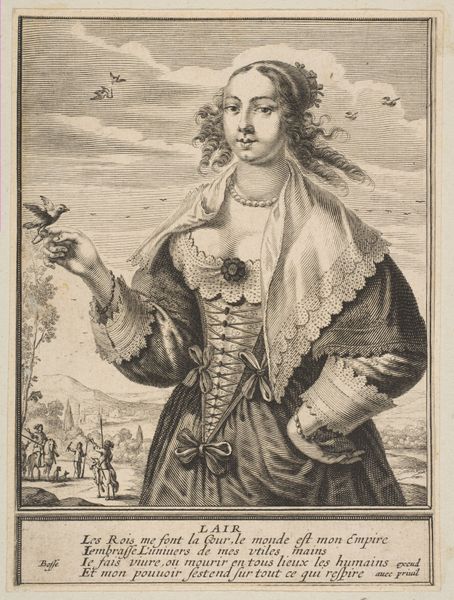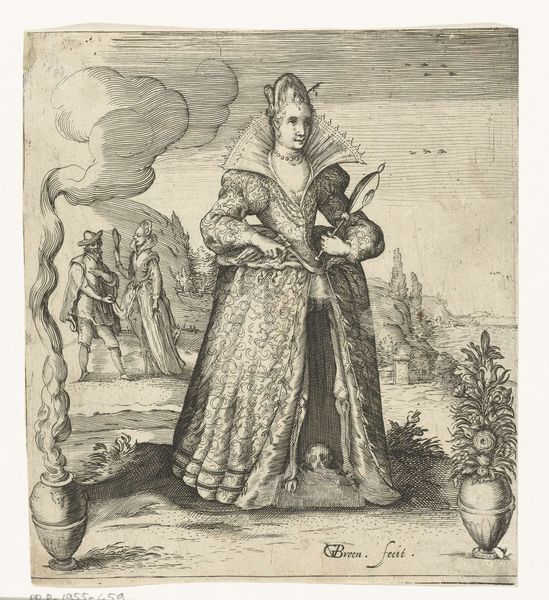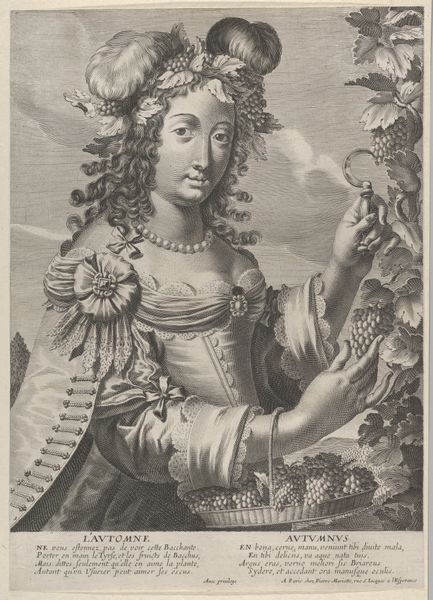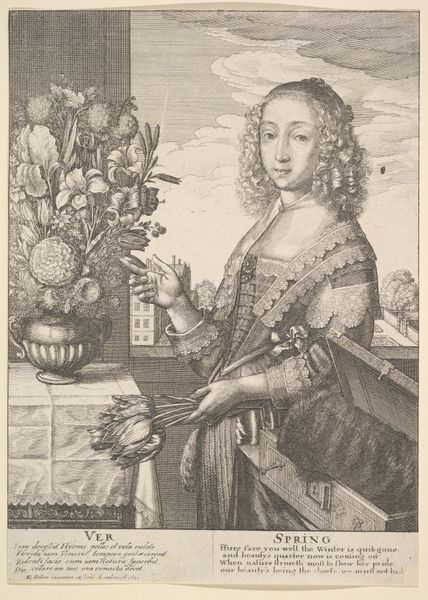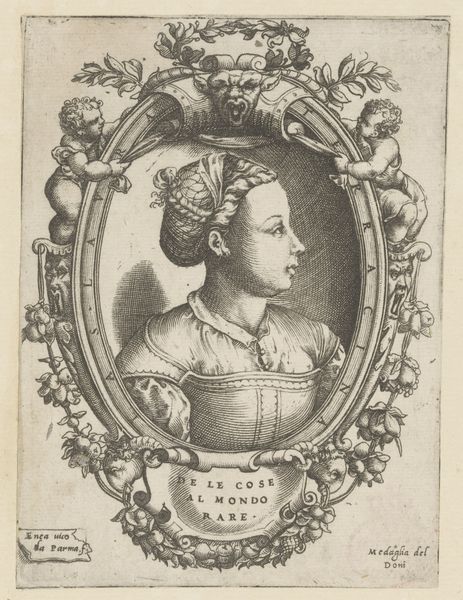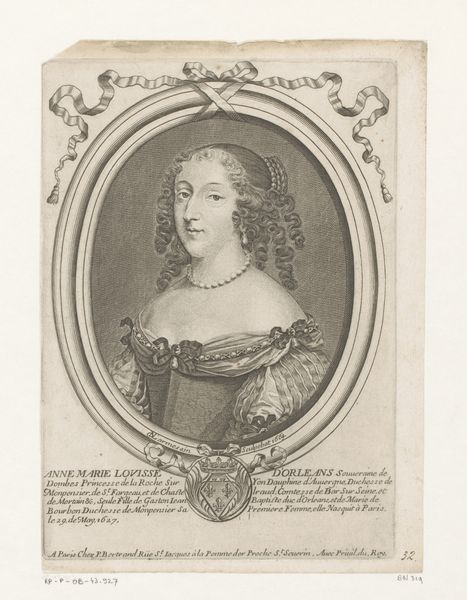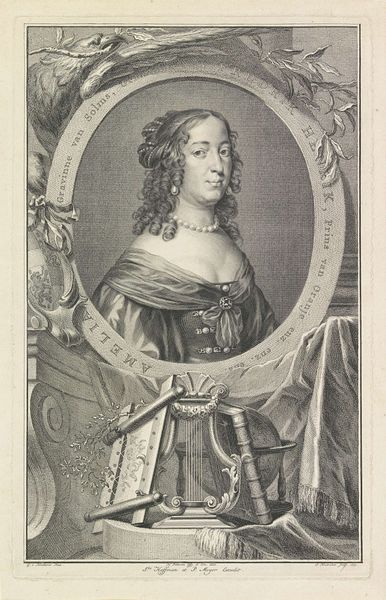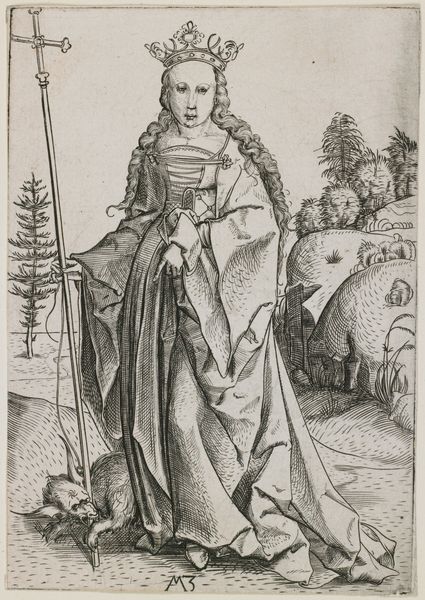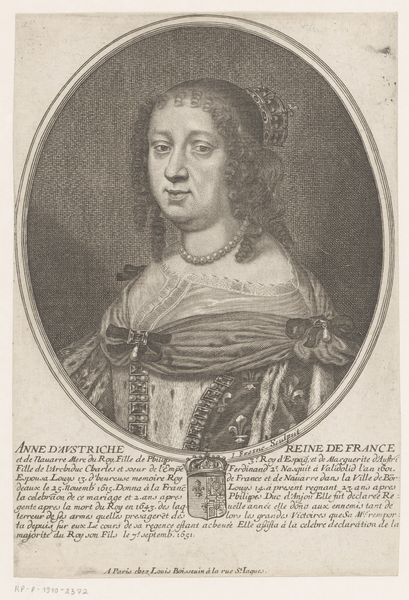
drawing, print, engraving
#
portrait
#
drawing
#
allegory
#
baroque
# print
#
old engraving style
#
landscape
#
form
#
line
#
genre-painting
#
history-painting
#
engraving
#
realism
Dimensions: Sheet: 5 13/16 × 4 5/16 in. (14.8 × 10.9 cm)
Copyright: Public Domain
Curator: Here we have "Earth," an engraving by Abraham Bosse from 1630. Editor: The fine lines create a surprisingly soft, almost ethereal feeling. There's something idealized but also a little melancholic about her gaze. Curator: Indeed. The central figure represents the allegorical embodiment of Earth, a concept prevalent during the Baroque era. Consider how the overflowing basket of fruits symbolizes abundance and the provision of nature. Editor: I see the allegory, but it also strikes me as reinforcing a particular vision of femininity tied to fertility and domesticity. The woman is literally depicted as a vessel of natural resources. The background also feels politically charged. Curator: Ah, you are referencing the hunt taking place? Symbolically it indicates humanity's dominance and consumption of the earth's resources. This aligns with the cultural narratives of the time, reflecting a growing scientific understanding but also exploitation of the natural world. Editor: Right. And her slight gesture towards the basket, it's as if she’s presenting the earth as something to be taken, possessed. Who does it serve to see this image of abundance alongside themes of conquest? What about those being hunted? I'm particularly interested in who had access to it during a time of stark class divisions. Curator: Her gaze is interesting in this regard. There's a knowing look, almost as though she's aware of the contradictions inherent in her representation. It’s like the symbol recognizes its own limitations. Editor: Or, perhaps, she anticipates the viewer, maybe us today. To truly value what the Earth provides would require restructuring political systems. What action is called forth through engaging with "Earth" critically? How might we redefine her symbolism? Curator: Bosse’s print gives us a visual snapshot into 17th-century beliefs about the earth and humanity's role, which also invites reflections on our current environmental ethics and future course. Editor: Right. And hopefully sparking further interrogation. By considering the intersection of gender, power, and environment, maybe this artwork becomes a call to build a more equitable relationship with the earth we inhabit.
Comments
No comments
Be the first to comment and join the conversation on the ultimate creative platform.
